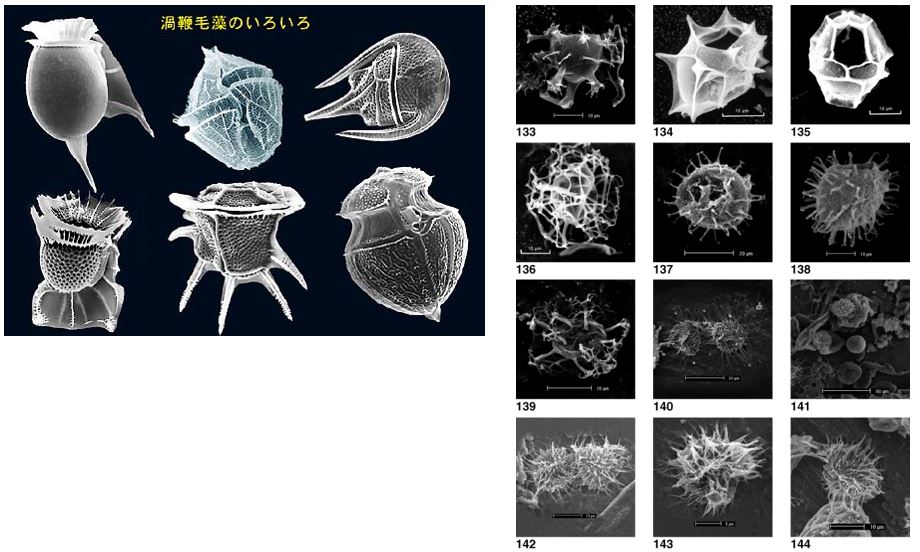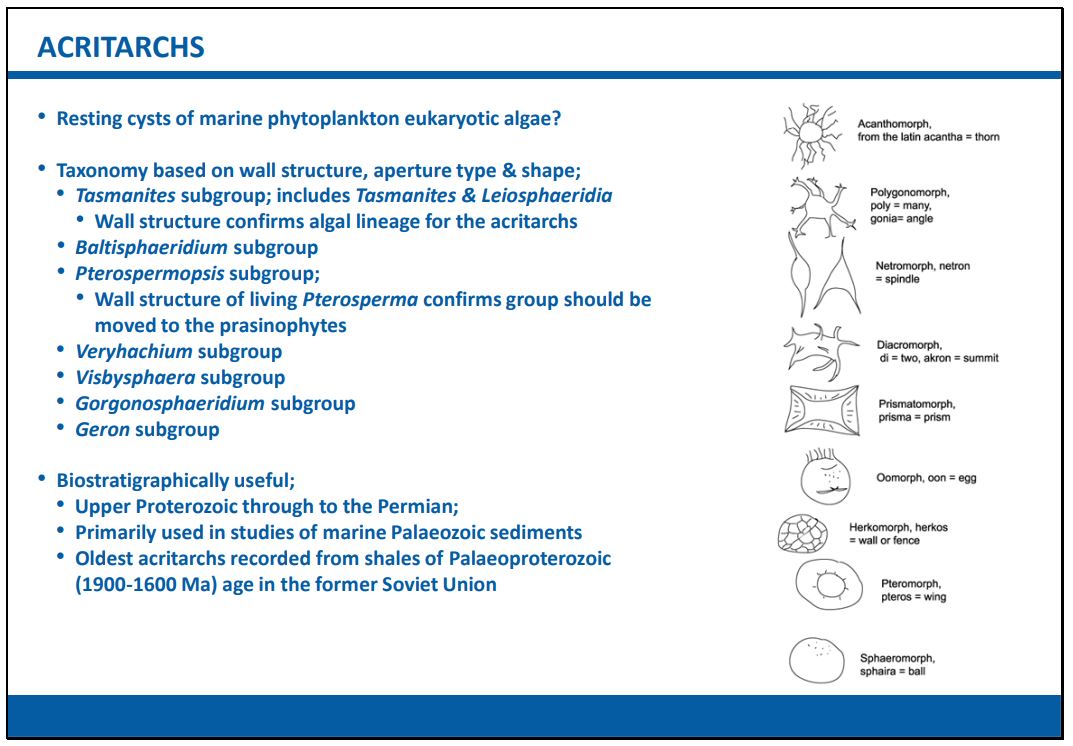dinos_acritarchs
Table of Contents
Dinoflagellates and Acritarchs
Dinoflagellates (and Acritarchs) are an important constituent of palynological preparations. They indicate marine conditions and are biostratigraphically important. As organic-walled palynomorphs they can also be found in coarser-grained (i.e., higher energy) sediments than other microfossil groups.

Left: Assorted dinoflagellate cysts. Right: Assorted acritarchs. It is though that some acritarchs may be ancestral to the dinoflagellates.
Dinoflagellates

- complex classification on the “tree-of-life”, indeed it has been problematic in the past to classify dinoflagellates as plants or animals. Some are photosynthetic (“autotrophic”), some are not (“heterotrophic”) and some are motile. Sexual reproduction is rare. However, current viewpoints (e.g. Armstrong and Brasier, 2005) favour inclusion within the realm of zoology rather than botany
- only around 10% of living dinoflagellate species form cysts which ultimately become part of the fossil record
- second only to diatoms as primary producers in the world’s oceans
- geologic range: Triassic – Recent (particularly diverse in the Cretaceous), although dinoflagellate biomarkers (not dinoflagellate cysts themselves) have been recorded in the Precambrian
- inhabit fresh, brackish and (mainly) marine shelf waters, but rare in the open ocean
- inhabit water depths between 0-50m (up to 100m)
Acritarchs

- thought to be extinct but some have similar characteristics to the Dinoflagellates
- possible affinities include wide range of different kinds of organism e.g. metazoan egg-cases to resting cysts of green algae or red algae
- geologic range: Precambrian & Paleozoic (mainly) – ?possibly Recent
dinos_acritarchs.txt · Last modified: 05/05/2023 15:17 by mike_gss
